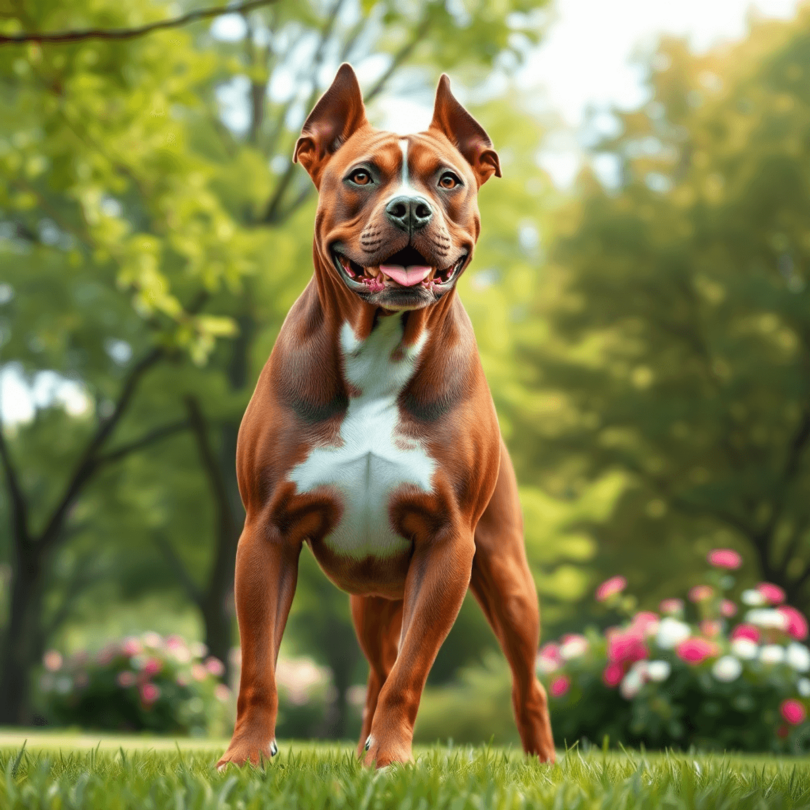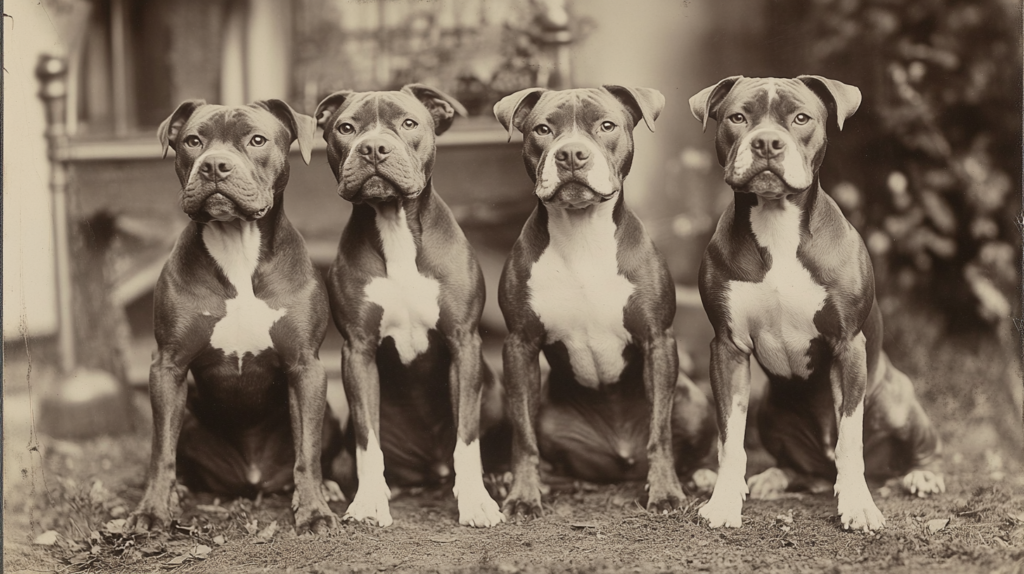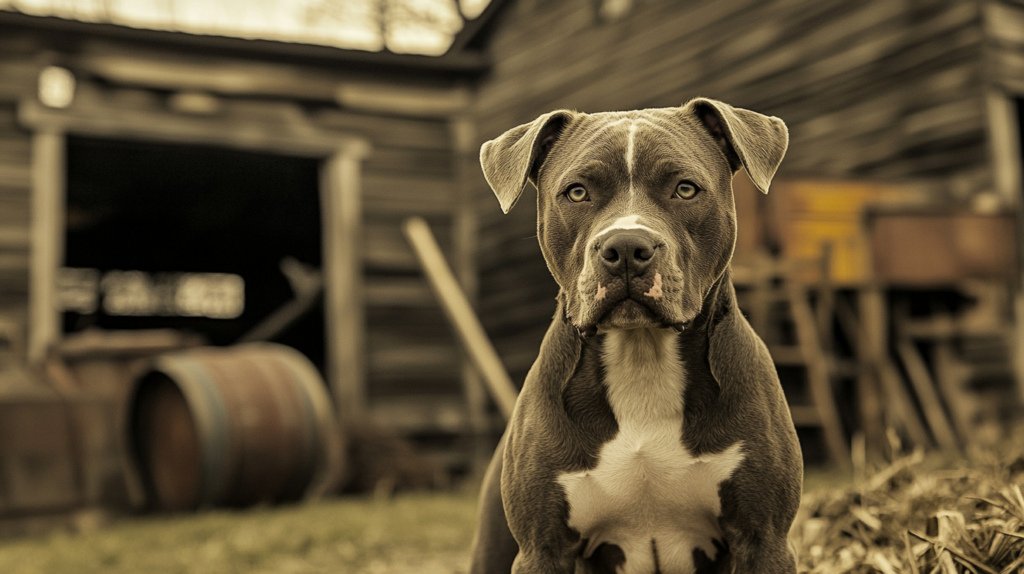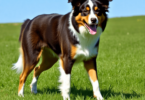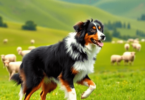The Fascinating History of American Staffordshire Terriers
The American Staffordshire Terrier, affectionately known as the AmStaff, has a captivating history of resilience and transformation. This breed emerged from the crossing of bulldogs and various terriers in 19th century England, initially bred for purposes like dog fighting and bull-baiting.
Understanding the history of American Staffordshire Terriers is crucial for potential owners and enthusiasts. It sheds light on their temperament, physical characteristics, and the societal perceptions that have shaped their journey. Knowledge equips you to appreciate these dogs not just as companions but as a breed with deep-rooted heritage.
In this article, you will explore:
- Key milestones in the AmStaff’s development
- The breed’s evolution from fighting dogs to beloved family companions
- Current status in society amidst challenges and misconceptions
1. The Bull-and-Terrier Crossbreed: Origins of the AmStaff
The American Staffordshire Terrier has its roots firmly planted in the 19th century England, where the blending of bulldogs and terriers gave birth to an intriguing breed known as the bull-and-terrier. Let’s dive into this captivating history.
Historical Context of Development
In the 1800s, bull-baiting was a popular spectacle in England. Bulldogs were revered for their strength and determination, while terriers brought agility and tenacity to the mix. This fusion aimed to create a dog that could excel in both strength and speed, making it well-suited for competitive arenas.
- Bulldogs: Known for their muscular build and courageous nature.
- Terriers: Smaller but fierce, they contributed agility and tenacity.
The Creation of the AmStaff
As these breeds mingled, they produced what would eventually evolve into the American Staffordshire Terrier. The early bull-and-terrier crosses were bred primarily for specific purposes, especially dog fighting. With their powerful jaws and robust physicality, these dogs showcased remarkable prowess in such contests, leading to their reputation as tough competitors.
Bred for Specific Purposes
The early breeding practices focused on producing dogs that could:
- Engage in bull-baiting until it was outlawed.
- Serve as effective guardians for families and property.
- Assist in herding livestock, showcasing versatility beyond mere fighting.
This historical context reveals how resilience and adaptability shaped the breed’s character. While initial breeding aimed at combat sports, it laid the foundation for traits that would later appeal to families seeking loyal companions. Understanding these origins is crucial for today’s enthusiasts and potential owners.
The journey of the American Staffordshire Terrier from its bull-and-terrier ancestors reflects not just a tale of endurance but also one of transformation—a transition from fighting dogs to cherished members of households across America.

2. Migration to America: The AmStaff’s Journey Across the Atlantic
The story of the American Staffordshire Terrier truly begins when immigrants set sail for America, bringing along their beloved bull-and-terrier dogs. As these dogs arrived on American soil, they found themselves in a rapidly changing environment where new roles awaited them.
Adaptation to New Roles
In the United States, AmStaffs transitioned from their fighting roots to become:
- Farm Dogs: Their powerful build and agility made them exceptional herders, adept at managing livestock.
- Guard Dogs: Fiercely loyal, these dogs excelled in protecting homes and families, earning their keep as reliable guardians.
The adaptability of AmStaffs allowed them to thrive in various environments, showcasing their versatility beyond mere fighting.
Evolution into Distinct Lines
As the breed settled in America, distinct lines began to emerge. Factors contributing to this evolution included:
- Selective Breeding: Owners sought specific traits for different roles—some bred for strength and others for temperament.
- Cultural Influences: Regional preferences influenced the characteristics valued in these dogs, leading to variations in appearance and behavior.
This divergence solidified the foundation for what we now recognize as the American Staffordshire Terrier. Their journey from the old world to new horizons not only shaped their physical traits but also enriched their personalities, laying the groundwork for the affectionate companions they are today.

3. Development and Recognition by Kennel Clubs
The journey of the American Staffordshire Terrier (AmStaff) took a significant turn with its recognition by kennel clubs, marking an essential chapter in The History of American Staffordshire Terriers. This development not only established breed standards but also influenced public perception, shaping the AmStaff’s identity in modern society.
Timeline of Breed Development in America
- 1936: The American Kennel Club (AKC) officially recognized the breed as the Staffordshire Terrier. This was a pivotal moment that validated the breed’s status and allowed for more structured breeding practices.
- 1972: Due to rising concerns about the breed’s association with dog fighting and its similarities to other “pit bull” types, the AKC changed the name to American Staffordshire Terrier. This renaming aimed to distinguish it from its UK counterpart, the Staffordshire Bull Terrier, while promoting a more positive image.
Significance of AKC Recognition
Recognition by organizations like the AKC is crucial for several reasons:
- Legitimacy: Official recognition conferred legitimacy upon the breed. It encouraged responsible breeding practices, ensuring healthier puppies and better temperaments.
- Public Perception: The new name helped reshape how the public viewed the AmStaff. By distancing itself from its fighting lineage through branding, it opened doors for these dogs to be seen as family companions rather than aggressive fighters.
In addition to AKC recognition, the United Kennel Club (UKC) also plays a vital role in defining breed standards. The UKC recognizes the AmStaff under different criteria, focusing on its working capabilities and versatility. These contrasting standards reflect diverse perspectives on what constitutes an ideal American Staffordshire Terrier.
The evolution of the AmStaff from a bull-and-terrier crossbreed into a beloved family pet showcases resilience and adaptability. Today, they are celebrated not just for their physical prowess but also for their loyalty and affectionate nature, proving that heritage does not dictate behavior. As we witness this breed’s transformation over time, understanding its past helps us appreciate its current place in our hearts and homes.
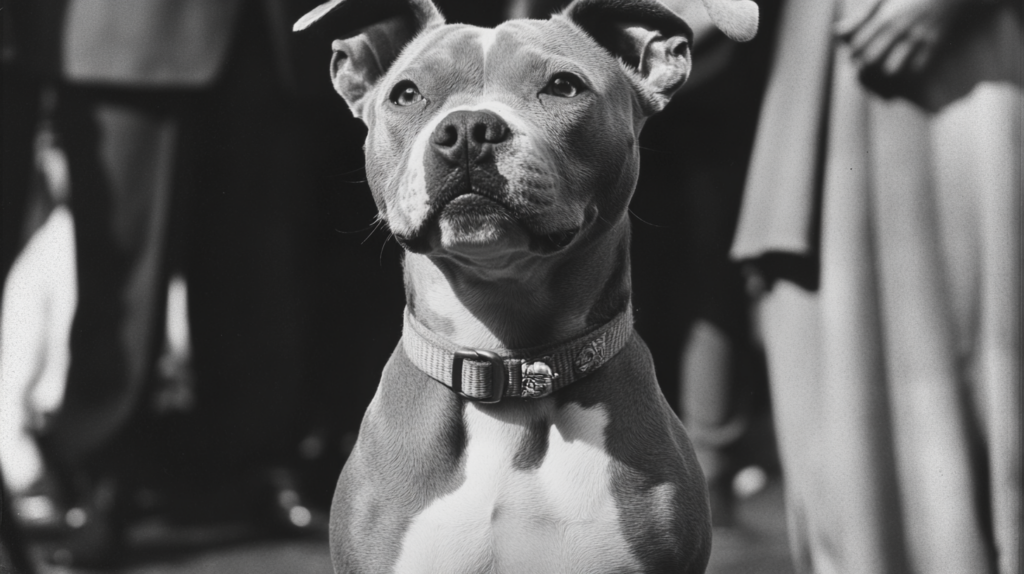
4. Notable AmStaffs in History
The American Staffordshire Terrier is a breed that boasts impressive physical and temperament traits, setting it apart as a truly remarkable companion. Let’s dive into what makes these confident dogs so special.
Physical Traits
- Muscular Build: The AmStaff is known for its strong, athletic physique. Their well-defined muscles are not just for show; they contribute to agility and strength, making them versatile working dogs.
- Broad Skull: They possess a broad, powerful skull that complements their robust body structure. This characteristic gives them an intimidating appearance, yet their expression often reveals a gentle nature.
Temperament Traits
- Loyalty: One of the most cherished qualities of the AmStaff is its unwavering loyalty towards humans. They form strong bonds with their families and are often described as affectionate and protective companions.
- Good-Natured Demeanor: Contrary to popular belief, these dogs are typically good-natured and friendly. With proper training and socialization, an AmStaff can be a loving addition to any household.
Common Misconceptions
Misunderstandings about this breed often stem from its historical context. Some people associate AmStaffs with aggression due to their ancestry linked to dog fighting. However, it’s essential to recognize that:
- Aggression is Not Innate: While they can display protective behavior, aggression is not a trait inherent in all AmStaffs. Like any breed, an individual dog’s temperament largely depends on upbringing, training, and socialization.
- Emphasis on Training: Responsible ownership plays a crucial role in shaping the personality of these dogs. Consistent training and positive reinforcement can help dispel myths surrounding their behavior.
Understanding these characteristics helps reshape the narrative surrounding American Staffordshire Terriers, revealing them as loyal and loving companions rather than aggressive fighters they are sometimes mistakenly portrayed as.
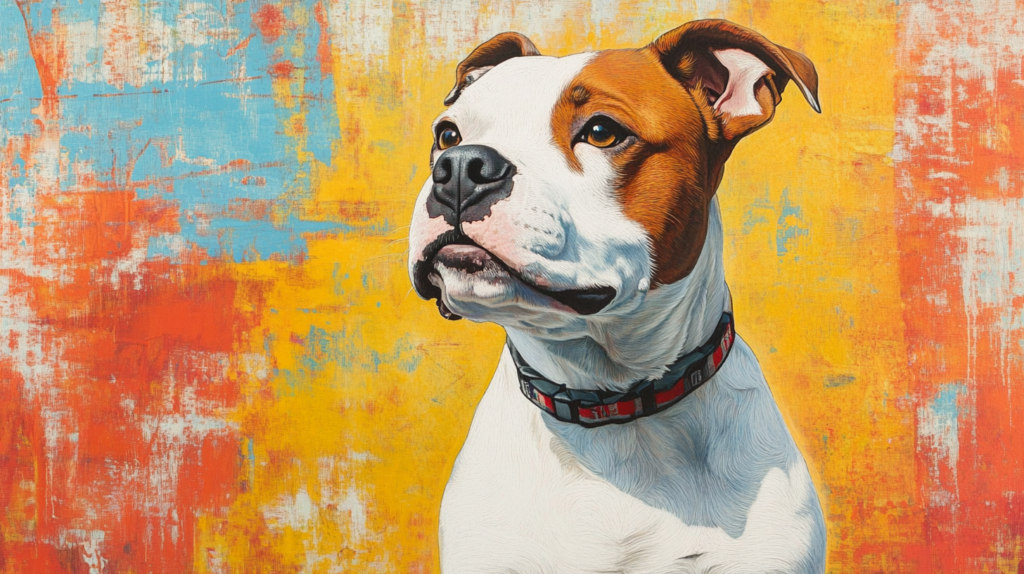
6. Evolution Through Time: From Pit Bull Type Dogs to Modern Companions
The history of pit bull type dogs is rich and complex, with the American Staffordshire Terrier (AmStaff) being a notable part of that story. As society’s views changed, so did the breeding practices for these dogs, shaping their physical traits and temperament.
Changes in Breeding Practices
- Selective Breeding: Early on, AmStaffs were bred primarily for strength and agility. However, as awareness grew around responsible pet ownership, breeders began focusing on temperament. This shift fostered dogs that are not only strong but also affectionate and loyal.
- Health Considerations: Over time, increased attention has been given to genetic health issues. Responsible breeders now prioritize health screenings to minimize hereditary conditions. This focus contributes to a better quality of life for AmStaffs today.
- Diverse Roles: Historically utilized for dog fighting, herding, and guarding, AmStaffs have transitioned into versatile companions. Their adaptability allows them to thrive in various roles within families, from energetic playmates to vigilant protectors.
Current Status in Modern Culture
Today, American Staffordshire Terriers enjoy a prominent place in popular culture and households worldwide.
- Family Companions: The breed is known for its affectionate nature towards children and other pets when properly socialized. Their loyalty makes them beloved members of many families.
- Community Contributors: Many AmStaffs participate in therapy dog programs or community service roles, showcasing their gentle demeanor.
- Advocacy and Awareness: Efforts are ongoing to combat negative stereotypes associated with pit bull type dogs. Organizations educate the public about responsible ownership and the true nature of these loyal companions.
The evolution of the AmStaff reflects both changing societal norms and breeding practices that prioritize temperament alongside physical capabilities. This journey continues as they carve out their place in modern society as cherished family members.
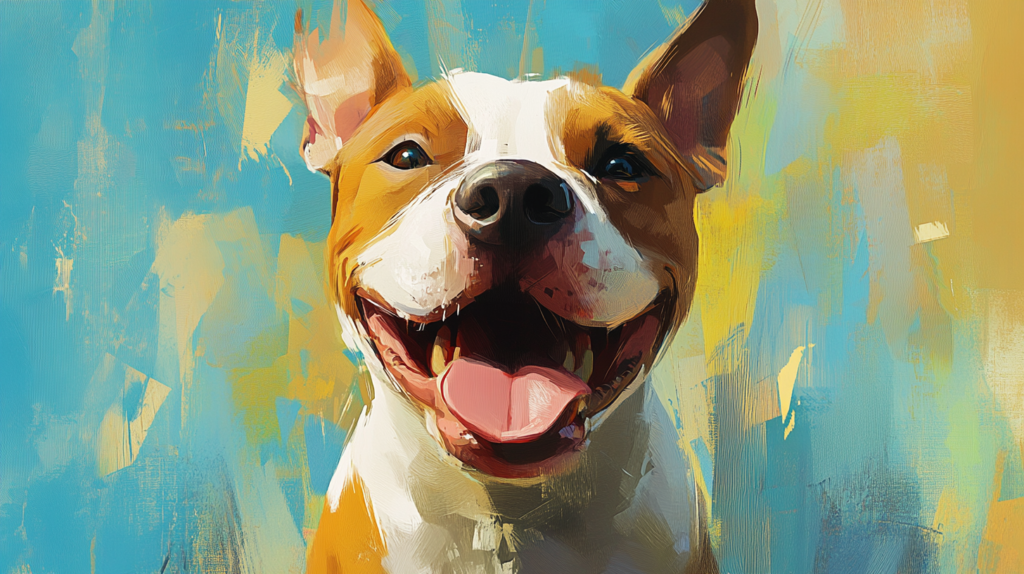
The Ongoing Journey of American Staffordshire Terriers: A Call for Responsible Ownership and Advocacy Against Misinformation
The American Staffordshire Terrier continues to hold a significant place among popular dog breeds in America. With their unique blend of strength, loyalty, and affection, AmStaffs are beloved companions for many families.
Current Popularity Rankings
According to the American Kennel Club (AKC), the AmStaff ranks among the top breeds, showcasing their enduring appeal. Their reputation is steadily improving as more owners share positive experiences, highlighting their suitability as family pets.
Contributions to Families and Communities
American Staffordshire Terriers excel as loyal companions, making them an integral part of family life. Their positive traits include:
- Affectionate Nature: Known for their love towards humans, AmStaffs thrive on companionship.
- Intelligence: They are quick learners, making training a fun and rewarding experience.
- Versatility: Their history as working dogs allows them to adapt well to various roles, from service animals to playful family members.
Advocacy Against Misinformation
Despite their rich history, misconceptions about AmStaffs persist. Advocating for responsible ownership is essential. Educating potential owners about:
- Proper training and socialization techniques
- Understanding the breed’s true temperament
By addressing these issues, enthusiasts can help change public perception and promote a better understanding of this remarkable breed. The journey of the American Staffordshire Terrier is ongoing, filled with love, loyalty, and the promise of brighter days ahead!

FAQs (Frequently Asked Questions)
What is the origin of the American Staffordshire Terrier?
The American Staffordshire Terrier, commonly known as AmStaff, originated from bull-and-terrier crossbreeds developed in 19th century England. These dogs were initially bred for specific purposes, including dog fighting, by crossing bulldogs with various terriers.
How did the American Staffordshire Terrier migrate to America?
Immigrants brought the American Staffordshire Terrier to America, where the breed adapted to new roles as farm and guard dogs. Over time, distinct lines within the breed evolved to suit various functions.
When was the American Staffordshire Terrier recognized by kennel clubs?
The breed was officially recognized by the American Kennel Club (AKC) in 1936 under the name Staffordshire Terrier. It was renamed to American Staffordshire Terrier in 1972, marking a significant milestone in its history and public perception.
What are some common characteristics of American Staffordshire Terriers?
American Staffordshire Terriers are known for their muscular build and broad skulls. They typically exhibit a loyal and confident temperament towards humans, challenging common misconceptions about aggression associated with this breed.
How has the breeding of American Staffordshire Terriers changed over time?
Breeding practices for American Staffordshire Terriers have evolved significantly, influencing both their physical appearance and temperament. Today, they are recognized as modern companions rather than solely pit bull type dogs.
What is the current status of American Staffordshire Terriers in society?
American Staffordshire Terriers rank among popular dog breeds in America today. They serve as loyal companions within families and contribute positively to communities, highlighting the importance of responsible ownership and advocacy against misinformation about the breed.
